Gaining research experience is a central component of the Causeway program. The research experience provide a glimpse of what a career in the mathematical sciences might be like. Research projects can range from studying a well-established topic in depth to working on specific cases of an unsolved or open-ended problem.
The program organizers pair each participant with a faculty mentor for a summer research project. In assigning faculty mentors the program organizers consider each student’s interests and background as well as the availability of faculty mentors. The research experience can be an important aspect of a competitive graduate school application, and the personal relationship a participant develops with a Northwestern faculty member can be useful in securing a letter of recommendation for graduate school applications.
Mentors and Research Topics in Mathematics
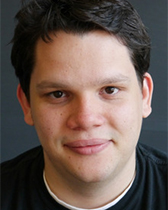
Antonio Auffinger
I work in probability theory. Under my guidance, Causeway students will be able to explore probability and random processes related to several areas of science. Examples include: Random matrix theory, percolation, random graphs, growth processes, and applications to data science and biological models.
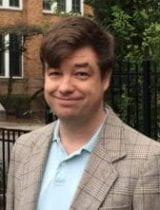
Aaron Brown
Consider multiplication by 3 on the circle. This is a prototype hyperbolic dynamical system (ie. nearby orbits diverge at an exponential rate.) Many interesting dynamical results can be seen already by studying this example.
(1) Multiplication by 3 admits a huge amount of “wild” invariant sets and invariant probability measures. One project is to understand properties of these objects and give examples with interesting behavior. For example: showing the set of invariant probability measures is a Poulsen simplex, showing periodic measures are dense, constructing closed invariant sets with prescribed Hausdorff dimension, computing entropies for invariant measures and sets, properties of “generic” invariant measures.
(2) A second project concerns understanding the proof of structural stability: given a sufficiently small perturbation of multiplication by 3, there is a continuous coordinate change converting the perturbed system back to the original. A more general result classifies certain smooth maps of the circle (the “expanding” maps) by continuous conjugacy to multiplication.
(3) A final more ambitious project is to now consider multiplication by 2 and by 3 on the circle and study the closed invariant sets and probability measures are invariant under both multiplication by 2 and multiplication by 3. It turns out the only non-trivial joint invariant closed subsets are supported on periodic orbits. Conjecturally the same is true for probability measures (but has only been shown for measures with positive Hausdorff dimension).
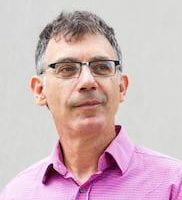
Ezra Getzler
My background is in mathematical physics, and I am especially interested in the geometry underlying physical theories. One powerful way of studying geometry is via groups. A group is a collection of invertible transformations of a set, with the property that the composition of any two transformations, and the inverse of any one of them, is again in the group.
A major change in mathematics occurred at the start of the 19th century, when people began thinking of a group as a mathematical object in its own right, independent of the particular set that it acts on. A group is determined by its multiplication table. This leads to the study of homomorphisms, which are functions from one group to another preserving multiplication.
A group is simple if its homomorphisms are either injective or trivial, mapping the whole group down to the identity element. The study of simple groups is the heart of group theory: the Jordan-Hölder Theorem shows that any finite group is built from standard simple pieces.
To obtain examples of simple groups, we turn to matrices, with entries in a finite field F, for example the field Fp with p elements, p prime. The projective group PGL2(F) is closely related to the group SL2(F) of 2 x 2 matrices with determinant 1. (As long as p > 2, the latter group has p3 – p elements, while the former has half this number.) The group PGL2(F) is not simple if p is 2 or 3, but it is if p at least 5.
Surprisingly, physics enters the story too, since taking F to be the complex numbers C, the group PGL2(C) is the Lorentz group, which underlies Einstein’s theory
of special relativity.
This project would be an excursion into the theory of such finite simple groups. Apart from the 26 sporadic groups that fit no clear pattern, and the alternating groups which arise from the study of permutations, all finite simple groups come from linear symmetries. Examples are orthogonal and symplectic geometry, and several more exotic ones associated with spinors (maybe familiar from the quantum theory of the electron) and Jordan algebras. Techniques coming from theoretical physics continue to have an important role in constructing these finite simple groups.
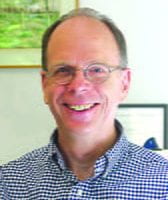
Paul Goerss
Algebraic topology and homotopy theory use algebraic invariants to uncover geometric and topological phenomena. Potential research projects include fixed point theory and immersion theory. The first discusses the question of when a continuous self-map of some space fixes a point. The second focuses on the topology of manifolds–surfaces such as spheres or tori are basic examples–and asks when can we draw them or, more formally, when and how can they be immersed in Euclidean space.
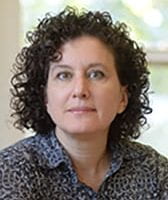
Bryna Kra
This project considers sequences of the form …0110011…, called “bi-infinite” — a topic at the heart of symbolic dynamics, my field of study. The simplest bi-infinite sequences whose entries are all 0’s and 1’s are the periodic sequences,
where a single pattern is concatenated with itself infinitely often. At the opposite extreme are bi-infinite sequences containing every possible configuration of 0’s and 1’s. These vastly different phenomena can be detected by counting the number of substrings of a given length, and in the periodic case this number is bounded while in the second case it grows exponentially. This growth rate of the possible patterns is a measurement of the complexity of the sequence, giving information about the sequence itself and describing objects encoded by the sequence. Symbolic dynamics is the study of such sequences, associated dynamical systems, and their properties, and we explore what happens in one dimension and what changes when passing to higher dimensions.
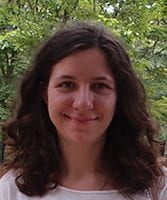
Maria Nastasescu
My research lies in number theory and is motivated by questions concerning the distribution of prime numbers. The study of primes lies at the heart of analytic number theory, a subarea that uses tools from analysis to study number-theoretic questions, but many questions concerning primes have real-world applications, particularly to cryptography.
It turns out that certain complex generating functions called L-functions encode information about the distribution of prime numbers. The classical example is the Riemann zeta function. Riemann’s Hypothesis, an unproved statement concerning the zeros of the zeta function, has stirred the minds of generations of mathematicians and has led to many new directions of exploration.
Below I describe some possible research directions, inspired by prime numbers:
(1) L-functions, like other tools and methods used to study primes, turn out to be very interesting in their own right. I’m particularly interested in questions concerning the growth and zeros of L-functions. Another area of interest involves looking at ways of approximating L-functions through various methods to gain new insights into their behavior. We can explore such questions either through theoretical methods or using computational approaches.
(2) Besides the role prime numbers played in the development and study of L-functions, they can be used to create entirely new number systems called p-adic numbers. P-adic numbers have many applications to both analytic number theory, as well as to the study of equations over the rational numbers. There is a notion of calculus that uses complex-valued p-adic functions. Many aspects of this calculus remain unexplored. Computations and algebraic manipulations can elucidate some of its secrets.
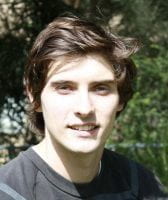
Gus Schrader
I work in mathematical physics, with a focus on understanding classical and quantum mechanical systems through studying their symmetries. These symmetries allow us to bring the techniques of representation theory to bear on the problem, and can lead to the phenomenon of ‘integrability’, where the system can in a certain sense be ‘solved exactly’.
Possible research projects include exploring the notion of classical and quantum integrable systems, learning the theory of cluster algebras (which provides, among many other things, a powerful combinatorial tool to study such systems), and investigating the theory of symmetric functions and its connection to representation theory.
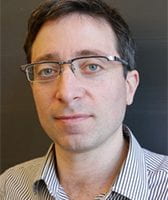
Jared Wunsch
I work in spectral and scattering theory, studying the interaction of geometry and dynamics with the behavior of propagating waves. A famous problem in this direction, posed by Mark Kac, is usually stated as “Can one hear the shape of a drum?” One cannot, it turns out, but there is a lot you can learn about the shape of a drum-head from the frequencies at which it vibrates. (The same story can also be interpreted in the language of quantum physics: you want to figure out the structure of a quantum system from the data of its energy levels.) Similarly, I am interested in what you can say about the long-time behavior of a propagating wave outside of an interestingly-shaped obstacle or in an interestingly-shaped spacetime such as the theory of general relativity predicts. These problems are related to the study of resonances, and there are some computations involving resonances which I think would make good introductory research projects.

Eric Zaslow
My research is in mathematical physics. I am excited by the interaction of foundational physics with pure mathematics. This relationship is on marvelous display in the study of classical and quantum-mechanical systems of particles. Students will explore one or more topics to investigate from among the following: Weyl’s law, the Stone von-Neumann theorem, geometric quantization, instantons and the WKB approximation, supersymmetry and Morse theory. The story becomes even richer when we replace “particles” by “loops of string.”
Mentors and Research Topics in Applied Mathematics

Daniel Lecoanet
My group studies the fluid motions inside stars. These can be studied in unprecedented detail by observing the fundamental oscillation modes of the star via asteroseismology. The group uses large-scale three-dimensional numerical simulations to study processes like convection, waves and magnetic fields, which play an important role in stellar evolution. Students would work with the group to connect 3D fluid dynamics simulations to one-dimensional models of stellar structure. This could involve numerical analysis, high-performance computing, asymptotic analysis, and/or model development. No prior knowledge of astrophysics or fluid dynamics is required!

Niall Mangan
My group develops models for physical and biological systems, especially those which have an impact on sustainability. For example, we have projects designing synthetic biology systems for biofuel production and characterization of novel semiconductor materials for photovoltaics. Mathematically we work at the interface between physical modeling and data science to develop new tools drawing from optimization, machine learning, and statistical analysis. Students who joined us through the Causeway program could gain experience in developing and analyzing mathematical models, trying out new data-science methods, and working on interdisciplinary teams with theorists and experimentalists.
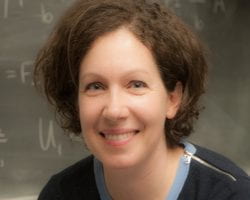
Petia Vlahovska
Our group is interested in the mathematical modeling of physical and biological systems. Current projects explore membrane biophysics, non-equilibrium soft matter, and fluid dynamics. Research in my group integrates theory and experiment. I direct the Complex Fluids and Soft Interfaces Lab, a testbed and a source of inspiration for our theories! Potential projects involve simulations of: collective dynamics and self-organization of active particles, Lorenz system and the Quincke rotor dynamics, shape fluctuations of soft interfaces.
Mentors and Research Topics in Statistics
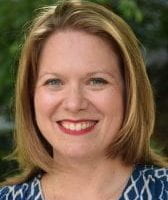
Elizabeth Tipton
As an applied statistician, my research focuses on the development of statistical methods for the design and analysis of experiments, causal inference, and meta-analysis. In a meta-analysis, the results of primary studies are converted to effect sizes (on a common scale), and then pooled together. One project involves the development of new effect size estimators and their properties. Another project involves exploring properties of different pooled estimators. In general, these projects involve exploring properties of estimators – bias, variance, sampling distributions – both analytically and via simulation studies.
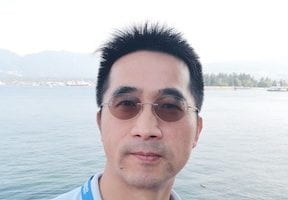
Ji-Ping Wang
I am an applied statistician working in the interface of statistics and biology. To me, this is a fascinating era to live as we have ample opportunities to work on all kinds of data. From the cDNA microarray to the single-cell RNA-seq technology, the biomedical research in the past twenty years has become data-driven and statistics is playing an essential role in analyzing and modeling of such data. My lab engages students in data analysis and methodology development in high throughput and high dimensional genomic and genetic data including microarray, RNA-seq, copy number variation, nucleosome mapping, CRISPR-Cas9, Hi-C and etc. Students will learn basic and advanced statistical methods and how to apply them to such data while developing programming skills.
